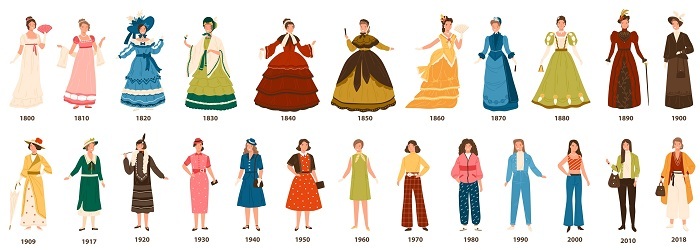

When discussing the fashion industry, the word “fashion collection” is likely one of the most frequently used. Every season, fresh, diversely themed collections are made available to a range of customers. Some make it past the large fashion runways, while others head directly for the retail shelves. Fashion collection is complicated and includes many elements such as innovation, marketing, trends, deadlines, and so on. The application of creation processes, which aid designers in organising their works, is necessary for a collection to be coherent.

Inspiration is the starting point for all fashion development, but we can’t always find it. Fashion line creation requires constant inspiration, so it’s important to train your mind to gather ideas and store them somewhere you can access them at any time. Designers frequently travel the world to see new areas and find inspiration. You can get ideas from anything and everything you see, but if you don’t save them each time, you’ll likely forget about them and have to start from scratch when you need them.
A fashion collection is a grouping of items of apparel and/or accessories that are connected in some way. This connection is typically based on the selected theme, which is connected to the consumer’s sense of style and a specific brand’s reputation. In theory, a collection’s function and guiding principles are relatively straightforward: through the compositions, techniques, fabrics, colours, cuts, and other essential components of the pieces, it introduces the stylist’s concepts to the fashion industry. With attire. The majority of collections, from the most upscale to the emerging, often consist of two product categories: the basics, which are more prevalent in prêt-à-porter and have a longer sales cycle, and the fashions, which have a more condensed, frequently limited, sales cycle.
Around 1850, Charles Frédérik Worth became the first couturier to become a “creator,” which is comparable to the modern design industry. He began making the clothes himself and selling them to his customers rather than only stitching them when someone placed an order. He began the model/mannequin industry by hiring ladies with bodies comparable to his clients’ in order to display these garments. There was still a lack of visual cohesion between the components despite all of these nuances. Paul Poiret was the first artist to use a theme in his work, which was inspired by oriental culture at the turn of the 20th century. Although the idea of a “subject of inspiration” was being used, it still did not constitute “collection” per se. Around 1930, Elsa Schiaparelli became the first designer to create collections with clear themes. Several items used these motifs as prints, needlework, and cut-outs.
Following are major sources
Visit a nearby museum or an online museum, then choose a fascinating piece that you enjoyed. Draw some sketches in response to it.
Do some local research, and then go to the exhibition. I want you to sketch or take a picture of whatever you enjoy, and then write down any thoughts you have for how you might recreate it.
Visit any art gallery or store, select a piece of artwork as your model, and use it to inspire your own drawings. Here, look for appealing colour schemes and textures.
Look at the structures, lines, and patterns of architecture. Discover some intriguing structures, develop any ideas you have, and discover how you may incorporate them into your works.
Stroll down the street while sketching or taking pictures of what others are wearing. This aids in your understanding of what consumers want and what you should produce.
Consider reinventing an outdated piece of clothing into a brand-new one. Perhaps by making many cuts and adding trims, or by any other means.
View the most recent fashion shows by visiting vogue fashion shows. Draw any patterns you like or amass pictures of them.
Examine your favourite designer collection and make a drawing of your favorites.
Choose a random nation that you haven’t heard much about, conduct some research on the top fashion designers there, and then check out the collection. Find out about their clothing customs. Draw anything you find intriguing or gather pictures.
Look up the attire worn during any era to see what it was like. Gather photos of children, men, and women from that era, then create your own variants.
Choose a piece of clothing, such as a dress, sleeve, top, etc., and do some historical study on it. Like how it was created, how the style evolved through time, and how we currently wear it. Create all the sketches, then create your own interpretation of them.

The inspiration for a collection can come from a lot of places! You can obtain inspiration for your collections from a variety of technical and artistic sources, such as: while investigating trends during the collection design phase; during the season’s largest fashion events; in a historical, ethnic, or natural component; in fashion-related periodicals; in the designer’s experiences and global awareness. The chosen theme is frequently a synthesis of components from these numerous sources, so the trick is to compile references that are visually appealing while still fitting the demands and expectations of your target audience.